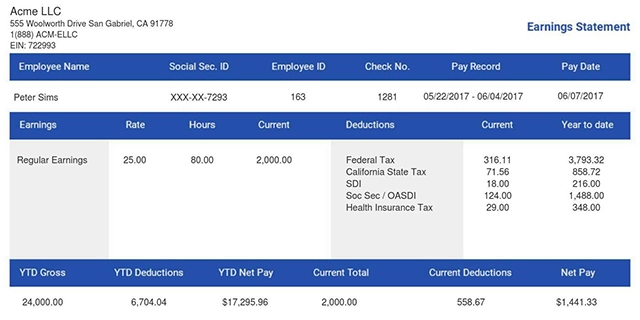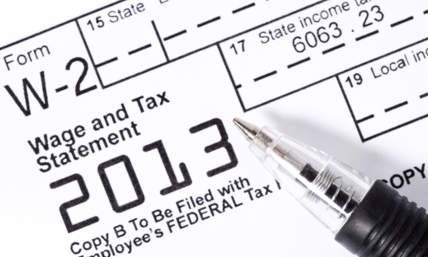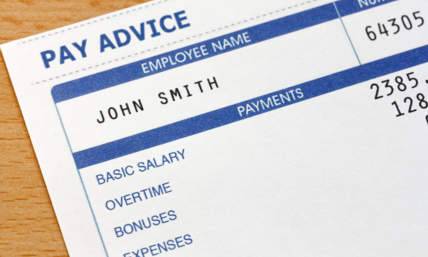Payroll Card vs Direct Deposit for Employers
In the contemporary business environment, the issue of how best to pay employees is a major concern amongst many employers. Two key solutions have stood out in the field today as leaders in payments: payroll card vs direct deposit. Many American households remain either unbanked or underbanked, according to the Federal Reserve. This means that businesses have to turn to other forms of payment.
This guide covers both types of payments to ensure that employers can learn what is best for their company and employees.
Payroll Card vs Direct Deposit
Direct deposit is an electronic fund transfer of wages earned done directly from an employer’s account to the employee’s account. A payroll card, also known as a pay card is a prepaid card that employers use to dispense wages. Like a debit card, employers transfer wages through the routing number and account number. Then, employees can access through electronic channels such as ATMs or point-of-sale transactions.
They are both more efficient than the use of paper checks because they are processed faster and also secure. Such a shift in payment remains a technological innovation with the emerging changes in the modern workforce.
Direct Deposit
Direct Deposit services have become the most common method of payment in the United States. The widespread use comes from some benefits for employers and employees.
Direct deposit means a great deal for employers in general. They do not have to produce several printouts of checks and other manual processes connected with paying the employees. This paperless approach also cuts down the expenses of check processing. The system gives instant confirmation of completed transfers. This makes it easier to keep records and reduce payment issues. Each transfer creates a new transaction history. This helps to ensure payment and lowers the potential of a check being lost or stolen.
For the employees, there is no doubt that direct deposit is advantageous. Employees can access their money on the same day they receive their salaries, without the visit to the bank. It also gives flexibility in managing money since employees can deposit money in different accounts. It makes savings automatic, and people can manage their money in a better way.
Direct deposit involves some initial cost in setting up compatible payroll systems. It can also have transaction fees. Employers need to retain the proper banking details and handle updates when employees change accounts. It also requires employees to have a savings or checking account.
Payroll Cards
Payroll cards have been considered an effective and convenient solution as compared to the usual means of payment. This is especially for unbanked or underbanked employees. These cards work like debit cards where the employers transfer net pay to the card every payroll cycle. From such cards, employees can transact via an ATM for cash. They can also pay for goods and services at retail outlets, and make online payments for various utilities.
The first benefit is that they are accessible. For those who don’t have checking accounts, it gets rid of costly check-cashing services, while giving features like mobile banking. It can also reduce processing costs while maintaining security, even for unbanked employees.
However, some cards can involve fees for some transactions, like ATM withdrawals. Both employers and employees pay fees. Some service companies like hotels, rental cars, and airlines may put lasting temporary holds or ‘freezes’ on pay card funds. This can definitely affect employees who only use the pay card for payments.
Security Features and Risk Management
Both payroll card vs direct deposit have a strong protection feature, but the protection is realized in different ways. Direct deposit benefits from the fact that it has adopted security provided by the banking industry. The transactions are secured by encryption and federal laws. Because these are electronic transfers, they are far safer from theft and fraud than with physical checks.
Security measures that are common in the use of payroll cards include the EMV chip. It creates a one-use code for every transaction. This is an attempt to minimize the cloning of cards or the utilization of stolen data. Cards can only be used for transactions when you have the four-digit PIN number. Most payroll card companies also offer smartphone applications. They have features like instant transaction notifications. With most, you can also lock cards in case the card is stolen. For employees making use of emerging financial tools, like digital funds transfers through direct deposits, ensuring secure access to online activities across devices is vital. An easy VPN download helps employees maintain privacy and security when managing finances or other sensitive tasks on the web.
According to EFTA regulation, the liability of an employee when they lose or have their pay card stolen can be limited. If they report this loss within two business days, their liability is up to $50. This protection rises to $500 if they report after two days but less than 60 business days after getting their statement. From 60 days, it is possible that the cardholder will assume responsibility for any transaction made on the stolen card.
Cost Implications for Businesses
Any payment option, including payroll card vs direct deposit, would involve certain costs. Direct and indirect costs which you should consider. Direct deposit has setup costs and per-transaction fees you pay to banks and payroll service companies. Moreso, employers may have to pay for suitable digital interfaces that are compatible with their payroll software. They may also need to invest in integration structures that make the transfers possible.
Payroll card programs often have a different cost structure. Despite the initial investment, it can be effective in cutting costs tied to the printing and delivery of paper cheques. However, employers need to assess the program fees. This ensures they don’t violate regulations that prohibit passing certain costs to employees.
Some of the payroll cards tend to attract fees:
-
Additional ATM withdrawal over a specified limit in a pay cycle
-
Point-of-sale transactions
-
Balance inquiries
-
Card replacement
-
Account inactivity
Impact on Employee Satisfaction
A company’s choice of payment method can have a huge impact on its employees. Employees who are confident about their wage expectations are likely to be dedicated. There is a lot of potential for savings with the use of both payroll card vs direct deposit. However, the deciding factor is to see which one will be most beneficial to the employees.
One way to find out is surveying to learn your employees' preferred method, whether payroll card vs direct deposit. Organizations should invest adequate time in issues concerning the well-being of their employees. This should not leave out finances. This tends to experience increased morale and fosters organization-employee relations.
Final Thoughts
The payroll card vs direct deposit conversation is very important. It is apparent that direct deposit continues to dominate the market. However, payroll cards offer distinct advantages for some employees. The key is to find a solution that is fast, inexpensive, and satisfying to the employees. Your payment method should be reviewed frequently to keep up with new technology.
At our paystub generator, we know how challenging it is for companies to handle payroll and payment services. For ease of use, our payroll management tools simplify your payroll needs so you can spend time on what counts. Your business and your employees. We are here to help your business and provide beneficial and effective payroll solutions.














